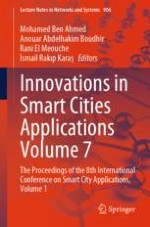Many cities in the developed world are undergoing a digital revolution, and have placed the "smart city" on their list of priorities. Smart cities use technological solutions such as Internet of Things, AI, 5G, Big Data, Cloud computing, Smart Grid, as well as all the emerging technologies of the digital era, to improve the management and efficiency of the urban environment. The aim is to make residents happier, healthier, smarter and more prosperous, and to make the city greener, cleaner, more sustainable, more responsible, more functional, more resilient, and more competitive.
Enhanced by extensive research studies and carried out under the guidance of international scientific experts in the field. This book explores various papers related to smart cities, including digital twins, geo-smart information systems, education, healthcare, economy and digital business, building and home automation, environment and agriculture, and information technologies and computer science.
